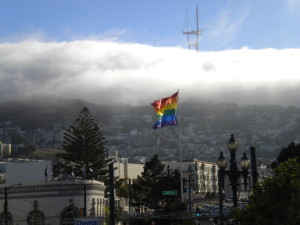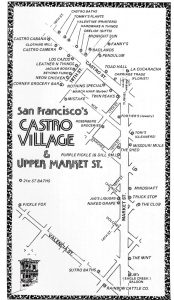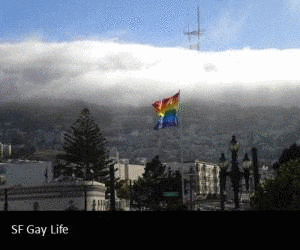 The Castro wasn’t San Francisco’s first gay neighborhood, nor even its second or third. But since the early 70s, it’s been the epicenter of gay life in San Francisco and arguably the world. And even today when LGBT people, either through economics or a greater comfort level are more diffused throughout the City, the Castro remains home to the largest number of gay bars and gay businesses in the City – perhaps more than the rest of the City combined.
The Castro wasn’t San Francisco’s first gay neighborhood, nor even its second or third. But since the early 70s, it’s been the epicenter of gay life in San Francisco and arguably the world. And even today when LGBT people, either through economics or a greater comfort level are more diffused throughout the City, the Castro remains home to the largest number of gay bars and gay businesses in the City – perhaps more than the rest of the City combined.
For generations, the only humans to live in the present-day Castro neighborhood were the Ohlone Tribe. Then in 1776, the Spanish de Anza expedition established a military outpost at the present-day Presidio and a Mission at Mission Dolores. The Castro was, at the time, an intersection of trails that connected these European settlements.
In 1845, José de Jesús Noé was granted a plot of land called Rancho San Miguel, which spanned four thousand acres from Twin Peaks into both Noe and Eureka Valleys. The land was sold to John M. Horner nearly a decade later, in 1854, and he laid out what he called Horner’s Addition, a grid bound by Castro Street on the west, Valencia Street on the east, 18th Street on the north, and 30th Street to the south. But it wasn’t until the Market & Castro Street Cable Car line opened in 1886 that the neighborhood could be properly developed.
In the late 1800s, the neighborhood was made up largely of Finnish immigrants and not long after the 1906 earthquake was known as Little Scandinavia. Then starting around the 1930s, the neighborhood became more of a working-class Irish neighborhood until the mid-1960s.

The first gay bar to move in was the Missouri Mule at 2348 Market Street (now part of Beaux) in 1963. It was followed in 1967 by Libra (1884 Market Street) and I-Do-Know (4146 18th Street), which soon became the Honey Pot and then, from 1971 through 2005, the Pendulum, a bar catering to African American men and their admirers.
These could have just been stand-alone gay bars. But then, following the Summer of Love in 1967, thousands of gay hippies spilled over from the Polk and the Haight to move into the neighborhood’s quaint yet dilapidated Victorians, where rents were cheap and, as middle class families fled to the suburbs, could be purchased relatively cheaply.
Charlotte Coleman, who owned the Golden Cask in the Haight as well as a number of other gay bars farther down Market Street, opened The Mint (1942 Market Street) in 1968. It remains the oldest gay bar in the Castro area to retain the same name (if you define the Castro to stretch that far down Market Street – if not, then Twin Peaks, the first gay bar perhaps in the country to have plate glass windows, holds that distinction).
Bars were the initial gay businesses in the area. But like the Polk, the “Castro Village” (later called simply the Castro), soon started to bring in other gay-owned and -friendly businesses: restaurants, retail shops, bathhouses, and hotels. Many residents and established businesses were resistant, some fleeing to the suburbs and selling their homes cheaply, but others embraced the neighborhood’s burgeoning gay population. Cliff’s Variety, which had been in the neighborhood for decades, was the first established business to hire gay sales clerks, and they gladly their new residents renovate the area’s dilapidated Victorians.
Harvey Milk and his lover, Scott Smith, opened Castro Camera at 575 Castro Street in 1973, moving into the apartment above. Milk soon became politically active, forming the Castro Village Association to counter the Eureka Valley Merchants Association, the Castro Street Fair – the City’s oldest annual neighborhood street fair – and then, after losing his third political race without the endorsement of more establishment-oriented gays, the San Francisco Gay Democratic Club as a counterpoint to the Alice B. Toklas Gay Democratic Club.
Today as the gay population becomes more diffused throughout the City, the Castro remains the most visible gayborhood in the City. Most of the gay bars are gone from the once-dominant Polk. The “Miracle Mile” in the Folsom Street area South of Market now only has a handful of gay bars, down from dozens in the 1970s. But the Castro still has around 20 gay bars (depending on how stringently you define “bar,” much less “gay bar”).
Related Resources
- History of Castro Gay Bars
- Blog Posts about the Castro
- Castro-Related Photo Galleries [note: external link, may not be work-safe]
